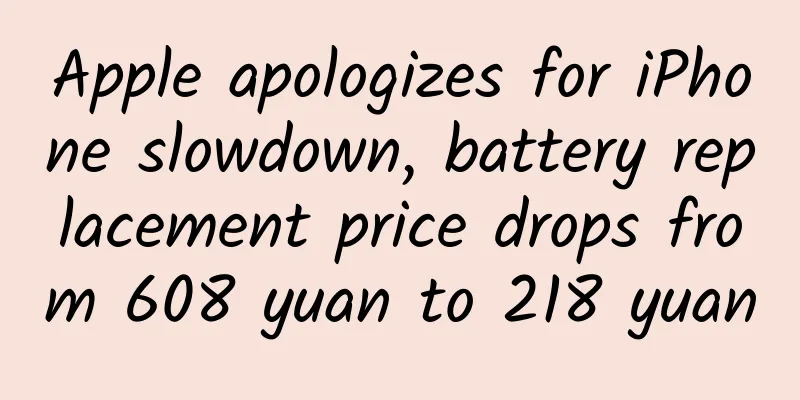Is China a hotbed for the rise of the self-balancing vehicle industry?

|
Due to its high price and unclear positioning, Segway has been in a lukewarm state for more than a decade. In the past two or three years, some domestic entrepreneurs have repositioned and redesigned the balance bike, and the compact and portable balance bike has been favored by many geek users. Hitting the pain point of traffic congestion Balance bikes have been around for more than a decade, but due to unclear positioning and high prices, they were mistakenly considered to be a product for the nobility to show off, rather than a consumer product for the general public. The originator of balance bikes, Segway, was even defined as a product that could replace cars, but it never became popular. Some domestic entrepreneurs changed their thinking, grasped the pain point of traffic congestion in Chinese cities, and repositioned the self-balancing scooter as a short-distance means of transportation, making it a daily consumer product. Zhou Wei, the founder of Lexing Tianxia, believes that personal transportation is the lowest cost and fastest solution to traffic congestion. The extremely light and portable self-balancing scooter meets people's daily short-distance travel needs and can greatly solve the problem of urban traffic congestion. As people continue to flock to cities, urban traffic congestion is becoming more and more common. So far, AutoNavi has released traffic analysis reports on major Chinese cities for five consecutive quarters, among which the ranking of congestion in key cities across the country has attracted much attention. The problem of urban congestion needs to be solved urgently, but there is no solution for the time being. The increasingly lightweight and portable self-balancing scooters are very likely to become a good way to alleviate traffic congestion. Numerous obstacles need to be overcome The self-balancing vehicle industry has just started, and there are still many obstacles to overcome. Lanes, safety, and regulations are all obstacles to the development of self-balancing vehicles. In the past 30 years, China's transportation facilities were mainly built for cars, and there were very few bicycle lanes. It is difficult for a small self-balancing vehicle to compete with a huge car for a road. If the lanes are not solved, the resistance to the marketization of self-balancing vehicles can be seen. Now some local governments have realized the importance of various dedicated roads. For example, Shenzhen is promoting the construction of slow-moving transportation systems such as bicycle lanes and sidewalks. In 2015, Shenzhen will build more than 500 kilometers of bicycle lanes. With the establishment of various dedicated roads, the space for self-balancing vehicles to be used will become larger and larger. Of course, compared with the long-term construction of dedicated roads, the regulation of the self-balancing scooter market is more urgent. The self-balancing scooter is in a chaotic period, with various products flooding the market, and some products may have quality problems. Zhou Wei revealed that the biggest difference between electric vehicles and self-balancing scooters is stability. Electric vehicles are stable from front to back, but self-balancing scooters are constantly unstable. Only by keeping the system stable can the self-balancing scooter be guaranteed to be balanced in real time. But now some copycat manufacturers use 200-watt electric vehicle motors, which makes it difficult to ensure the real-time stability of the self-balancing scooter. Moreover, various counterfeit brands are "rushing in", causing chaos. Zhou Wei said that in the early stage of the rapid development of the industry, in order to avoid market disorder, it is particularly important to formulate standardized industry standards. Lexing Tianxia is promoting the establishment of an industry association, and will also work with some manufacturers to eliminate inferior products through the market, so that the balance car market can be purified. There will be various obstacles in the early stages of the development of any industry, and the self-balancing vehicle industry is no exception. The long-term development of the self-balancing vehicle industry depends not only on technological innovation, but also on market cultivation and the preparation of social conditions. Only by overcoming these obstacles can the self-balancing vehicle market grow and the self-balancing vehicle industry become stronger. Lexing takes the lead in expanding the market with low prices After Xiaomi invested in Ninebot, the outside world generally predicted that a 999 yuan unicycle balance bike would be launched. But a month later, there was no super low-priced balance bike, but there was the 2,999 yuan two-wheel balance bike R0 and electric scooter L6 from Lexing Tianxia. Zhou Wei said that the price cut was related to Xiaomi's investment in Ninebot, but it was mainly to cater to the consumption power of potential young users. Similarly, in order to popularize the market, Ninebot may also launch some low-priced balance bikes to activate more user groups. However, from the practice of Lexing, it can be seen that price cuts may reduce some functions of balance bikes. Zhou Wei revealed that RO cut some intelligent functions in R1, and the speed and mileage were also reduced. In short, low prices will only cause the balancing car industry to enter a low-profit period prematurely. Zhou Wei said that an industry must maintain a certain profit in the early stages of development so that companies have sufficient vitality to lead technological development, but China's smart hardware development has entered a vicious circle: entering a low-profit period prematurely has caused almost all companies to fail to survive. Lexing will also face the challenge of low-profit survival. Is China a hotbed for the self-balancing scooter market? Not necessarily. The self-balancing scooter industry has just emerged in China and has encountered many problems such as survival. Of course, these challenges are faced by any early industry. At the same time, those companies that dare to innovate will stand out in the big waves. The self-balancing scooter industry is about to enter a low-profit period. Before that, self-balancing scooter companies must explore a development path of "Internet +". Only in this way can they be invincible. As a winner of Toutiao's Qingyun Plan and Baijiahao's Bai+ Plan, the 2019 Baidu Digital Author of the Year, the Baijiahao's Most Popular Author in the Technology Field, the 2019 Sogou Technology and Culture Author, and the 2021 Baijiahao Quarterly Influential Creator, he has won many awards, including the 2013 Sohu Best Industry Media Person, the 2015 China New Media Entrepreneurship Competition Beijing Third Place, the 2015 Guangmang Experience Award, the 2015 China New Media Entrepreneurship Competition Finals Third Place, and the 2018 Baidu Dynamic Annual Powerful Celebrity. |
>>: LePar helps traditional channels transform into service providers
Recommend
WeChat installation package has expanded 575 times in 11 years, and 98% of the files are garbage: Why is the size of the App getting bigger and bigger?
Recently, a blogger said that the Android APK ins...
8000 words to deconstruct the 618 brand marketing gameplay
618 marketing is becoming more and more intense a...
The hot clouds dispersed, and the cool breeze rose
Loading long image... Source: National Geographic...
May's hot marketing calendar is here!
From the beginning of the month when jokes about ...
Creative formulas and ideas for advertising in the medical beauty industry!
Sponsors have started a war to grab market share,...
Siping Mini Program Development Company, how much does it cost to make a moving mini program?
How much does it cost to be an agent for a moving...
What superpowers do growth hackers need?
I've recently been reading Fan Bing's &qu...
The blue ocean of battlefield-changing somatosensory games emerges
After the Wii motion-sensing game console became ...
Kunming Hun Tea Tasting 2022 exclusive Hun Sang experience is waiting for you!
Kunming Hun Tea Tasting 2021 Exclusive Hun Sang E...
How to wake up quickly within 3 seconds when you feel sleepy? Learn these tricks...
This article was reviewed by Zhao Wei, MD, associ...
Baidu bidding OCPC delivery and optimization guide!
What I want to talk about today is search OCPC. I...
Case review | Difference in daily activity? Is it difficult to promote vitality? Learn user operations from Onmyoji
Onmyoji is a phenomenal mobile game with over 10 ...
Who is the number one mausoleum in the world?
Mid-Autumn Festival Burning incense and asking th...
Hsu Chi's personal information: What conditions are needed for website keyword ranking optimization?
With the rapid development of the Internet, compa...
What exactly is going on with renting a boyfriend or girlfriend during the 2020 Spring Festival? How much?
The 2020 Spring Festival is approaching, and many...









